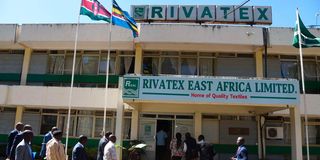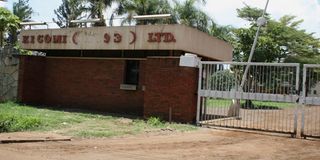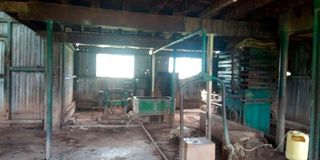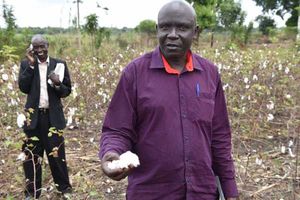
Rivatex East Africa Limited in Eldoret City in this picture taken on January 13, 2023.
Kenya has blamed the World Bank (WB) and International Monetary Fund (IMF) for the collapse of the textile industry as mitumba(second-hand clothes) problem plagues revival efforts.
In a new policy to guide the revival of the cotton, textile and apparel industry, the Ministry of Investments, Trade and Industry (MITI), lays the blame on IMF and the WB for the decline of the industry since the introduction of the structural adjustment programmes (SAPs) mid-1980s.
“One of the key factors that led to the collapse of the cotton industry in Kenya was the implementation of SAPs imposed by the World Bank and the IMF,” says the ministry.
SAPs were a set of economic reforms initiated by the World Bank and the IMF to address Kenya’s declining economic performance, primarily by reducing government interventions in the economy through deregulating markets and privatising State-owned enterprises.
The programmes were imposed as conditions for Kenya to access loans from the Bretton Woods institutions.
The government now blames the IMF and WB programmes for forcing Kenya to adopt market liberalization policies such as the removal of subsidies and price controls, which ended up suppressing the textile industry.
The SAPs forced the government to end subsidies on cotton farming inputs such as pesticides and seeds, which the Ministry notes affected the productivity of the crop.
Prevalence of pests impacted crop yields as government-backed pest control measures were discontinued and by the 1990s cotton production had dwindled, with most ginneries and textile mills shutting down.
“Many local ginneries and textile industries, including KICOMI and Rivatex EA Ltd, were privatized or collapsed due to competition from cheaper imports following liberalisation. Between 1984 and 1994, the production of cotton fell from around 70,000 bales annually to below 20,000 bales,” says the ministry.

The entrance of Kisumu Cotton Mills-Kicomi
Cotton farming was introduced in Kenya during colonial times in 1906, initially to feed the British textile industry.
But the industry grew fast and by 1929 Kenya was exporting raw cotton valued £3,358,307 (about Sh578 million in current exchange terms) to Britain, Japan, Portugal, Italy, US, India, China, France, Germany, Spain.
By 1955, the cotton industry had expanded hugely and the colonial government created the Kenya Cotton Lint and Seed Marketing Board to regulate it and facilitate marketing of lint and seed.
Funds were provided to undertake specific development projects for the cotton-growing districts. Roads were improved, bridges built and machinery for maintenance installed.
Consequently, the crop became central to smallholder farming communities in Western Kenya, Eastern Kenya, and parts of Central Kenya.
It provided a reliable cash crop, particularly in areas where maize or other staples struggled due to climate,” the Ministry notes.
The colonial government also established the Kenya Industrial Development Corporation in 1954 to facilitate the industrial and economic development of the industry and by 1956 three spinning, weaving and knitting factories were established in Nairobi and Nakuru.

Some of the machines that were used in cotton processing at the Kendu Bay cotton ginnery.
“The apparel factories produced men's suits, dresses, uniforms, underwear and overalls. The production catered for all income groups in the colony,” the policy notes.
In 1962, Kenya started controlling imports of textile products which further boosted the sector to become central to Kenya’s economy as the country gained independence.
“At its peak in the late 1970s and early 1980s, Kenya produced 70,000 bales of cotton annually. This period saw about 200,000 hectares of cotton cultivated, involving over 500,000 smallholder farmers,” the Ministry notes.
It was at this point when the IMF and WB, as Kenya sought loans from them, imposed the conditions leading to the collapse of the industry, and opening up the country to cheap imports.
The government continues to pursue revival of the cotton industry with plans to double land under cotton farming from 104,000 acres last year and increase production from 20,000 bales to 200,000 bales annually.






